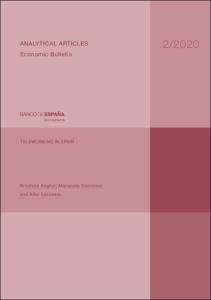Teleworking in Spain
Authors
Issue Date
12-May-2020
Physical description
17 p.
Abstract
As a result of the boost given to teleworking by the current crisis, this article analyses the potential of this form of work in Spain and the capacity of different socio-demographic groups to benefit from it. According to the Spanish Labour Force Survey, the percentage of the employed who, at least occasionally, work from home amounted to 8.3% in 2019, up 2.4 percentage points (pp) from 2009. By occupation type, remote working is more frequent among the self-employed, small companies and skilled occupations. Furthermore, this form of work is still infrequently used in certain sectors of activity which could have been bolstered by new technological developments, such as manufacturing, public administration, transportation and storage, administrative activities, wholesale and retail trade and other service activities. The type of workers, having taken into account the characteristics of their jobs, who work remotely are usually individuals aged between 35 and 65 and those with university studies. An analysis of the intrinsic characteristics of each occupation estimates that about 30% of persons employed could telework, at least occasionally, and, consequently, there is considerable room for improvement in the application of these working arrangements. However, this potential increase is asymmetrical and not all workers are going to be able to take advantage of these arrangements since those with a lower level of educational attainment will find it difficult to be able to benefit from them.
Notes
Artículo de revista
Publish on
Economic Bulletin / Banco de España, 2/2020
Other versions
Subjects
Teleworking; Occupations; COVID-19; Labour market; Structural analysis; Relaciones laborales; Mercado de trabajo; España
Appears in Collections:












